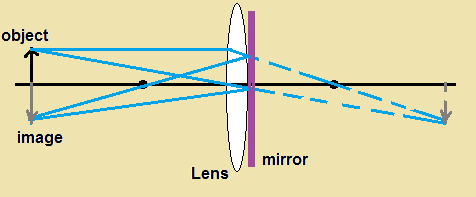Magnification, Power of ALens, Combination of Thin Lenses in Contact Combination of ALens and AMirror
Magnification of the lenses is defined as the ratio of the height of the image to the ratio of the height of the object. It can also be defined in terms of distance of image and object.
Power of Lens
The power of lens is the measurement of the degree of divergence or convergence, of the light rays that are falling on lens. The degree of divergence and convergence is dependent on the focal length of the lens. So, the power of length can be defined as reciprocal of the focal length of the lens that is being used. In SI units’ power of lens can be measured in Dioptre (D). The power of the convex lens can be positive, while the power of the concave lens is negative. Magnification power shows how larger can a lens make the appearance of the image. Magnification power is the direct relationship between the least distance of distinct vision, and the focal length of the lens. The least distance of distinct vision is also written as LDDV and it is closest the eyes can look at the object comfortably.
Combination of Thin Lenses in Contact Combination of Lens and Mirror

Let consider a coaxial arrangement of lens and mirror. The object is being placed in front of the lens. The incident rays are coming out of the object, first, they will undergo refraction on the lens and then they will be incident on the mirror. To obtain the position of the image in this combination, it is possible, to proceed in the following way.

In the above diagram, the convex lens that is having a focal length of 20cm is placed on the principal axis at 40 cm distance. A plane mirror is also placed at a distance of 30 cm behind the convex lens. The position of the image formed due to this combination can be calculated.
In the first condition, the effect of the lens has to be considered, so, the following situation can be stated.
u = -40cm and f = +20cm
In the ray diagram shown above, the lines and arrows are corresponding to the different distances and placed at the appropriate places. For showing the distances, there is absolutely no sense of the proportion. In the above diagram, the distance is shown in 40 cm but it is shown much smaller, 30 cm only. By using the lens formula
1/v -1/(-40) = 1/20
After calculations, the results show that v=40 cm
If there is a lens only, then the image will be formed at the Q1. The plane mirror is at a distance of 30 cm from the lens, then Q1 can be considered as a virtual object that is located at 10 cm distance behind the plane mirror. In this way, a real image is formed by the plane mirror.